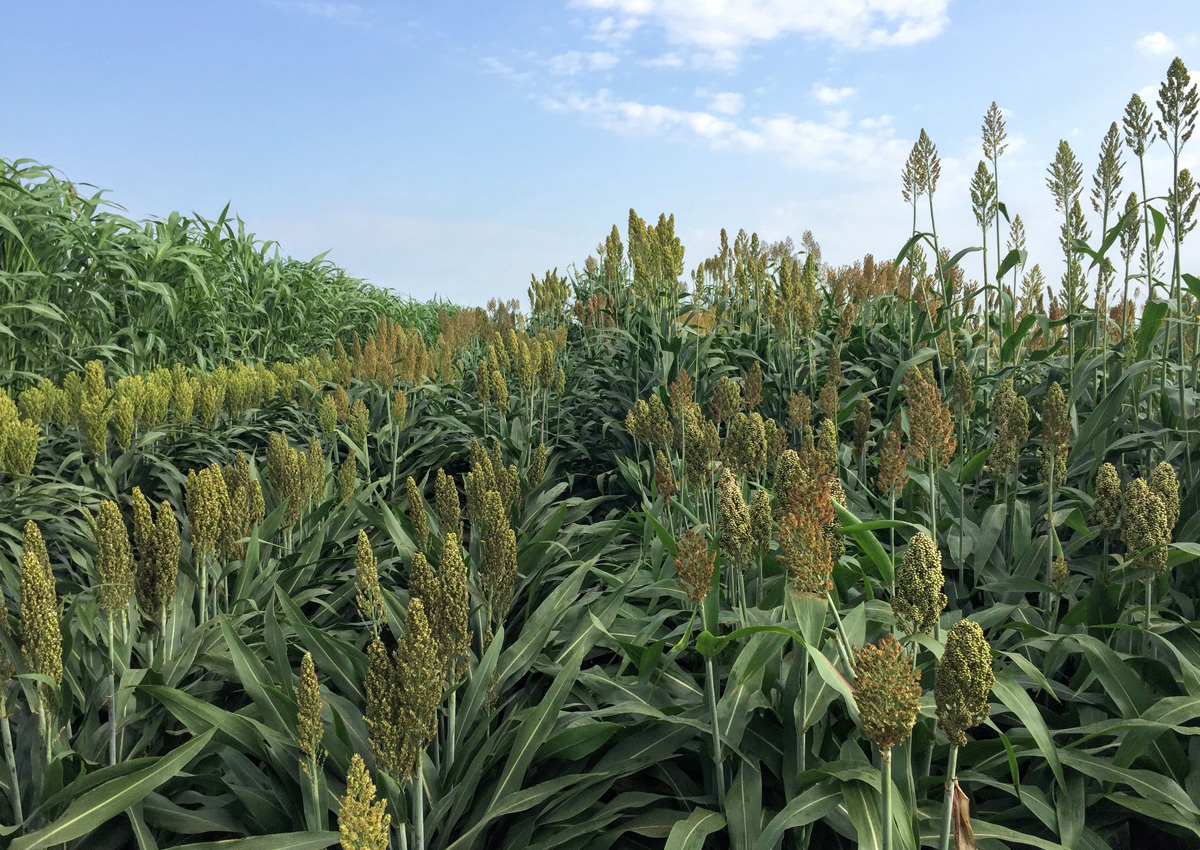
Study Shows How Environment and Genomes Interact in Plant Development
January 26, 2022| |
Scientists at Iowa State University have harnessed data analytics to look at the mechanisms that determine how genetics and changing environmental conditions interact during crucial developmental stages of plants.
The study published in New Phytologist focused on how temperature changes affect the height of sorghum plants and the concept of phenotypic plasticity, or how a given trait can differ as a result of environmental conditions. The new study examined the growth rate of sorghum between 40 and 53 days after planting, a critical stage of development in the crop. Zeroing in on that rapid-growth phase in the plant's life cycle allowed the researchers to examine the mechanisms that govern sorghum's phenotypic plasticity in greater detail.
The researchers found that increases in diurnal temperature change produced shorter plants. The trend was particularly distinct during that critical developmental phase around 40 to 53 days after planting. "We found that these genes actually interact with environmental stimuli and control the maximum growth rate as well as time to reach maximum growth rate," said Qi Mu, a postdoctoral research associate in agronomy and the first author of the study.
For more details, read the article in Iowa State University News Service.
| |
You might also like:
- Scientists Discover How Sorghum Controls Genome to Survive Drought
- Scientists Double Sorghum Grain Yields by 200%
- Pocket K No. 15: 'Omics' Sciences: Genomics, Proteomics, and Metabolomics
Biotech Updates is a weekly newsletter of ISAAA, a not-for-profit organization. It is distributed for free to over 22,000 subscribers worldwide to inform them about the key developments in biosciences, especially in biotechnology. Your support will help us in our mission to feed the world with knowledge. You can help by donating as little as $10.
-
See more articles:
-
News from Around the World
- FAO Index Shows Dip in Global Food Prices
- Climate, Field Management Keys to Increased Crop Yields
- Study Shows How Environment and Genomes Interact in Plant Development
- Low Sunlight Slows Down Rubisco, Limits Photosynthetic Productivity of Crops
- Are UK Consumers Willing to Try Cultivated Meat?
- Multi-stakeholder Organizations and Farmers in EU Join Forces to Fight Climate Change
-
Research Highlights
- Scientists Prove Baby Boom Transcription Also Effective For Apples
-
Plant
- Study Shows CRISPR Works Well in Outer Space
- Are Consumers Willing to Buy CRISPR Tomatoes?
- UK Announces Simpler Rules on Gene Editing for the Benefit of Farmers
- China Drafts New Rules for Gene-edited Crops
- Less Browning and Lower Acrylamide Levels Achieved in Potatoes Thanks to CRISPR
-
Read the latest: - Biotech Updates (January 14, 2026)
- Gene Editing Supplement (December 17, 2025)
- Gene Drive Supplement (February 22, 2023)
-
Subscribe to BU: - Share
- Tweet

